6 things you need to know about Fouquet’s Madonna

1. This Madonna is one of just six surviving paintings
Only six of Jean Fouquet’s individual paintings have survived the ravages of time, including this Madonna. And she belongs to the KMSKA collection! Our Madonna was originally part of a diptych, but the two panels were separated in the 18th century. The other one ended up in the Gemäldegalerie in Berlin and shows Etienne Chevalier, the person who commissioned the painting, with his patron saint.
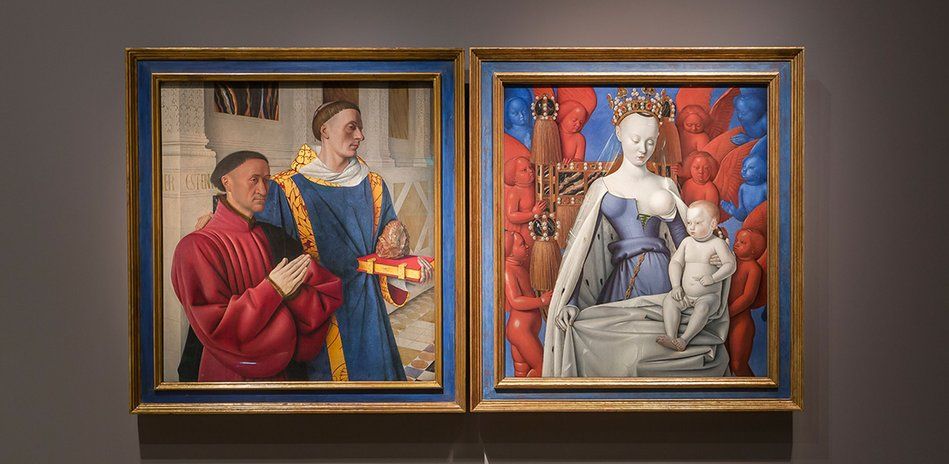
The Madonna by Fouquet as part of a diptych
2. This Madonna is Italian
Jean Fouquet set off for Italy at a young age and was enchanted by the new art forms that flourished there. At first sight, the KMSKA Madonna doesn’t show many Italian influences. The way Mary has been cut off around knee-height, though, does follow the Italian example. It brings the Madonna very close. Her aloof attitude is more Italian too: certainly if you compare this work with the warm bond between mother and child in Jan van Eyck, say.

Madonna Surrounded by Seraphim and Cherubim - Jean Fouquet

Madonna at the Fountain - Jan van Eyck
3. This Madonna is revolutionary
Jean Fouquet also paid close attention to the Flemish Primitives and their innovations. Like them, he includes the reflections of windows in the ornaments on the throne and as catchlights in the little angels’ eyes. The facial features are realistic: the Flemish Primitives were masters of the portrait. And above all, the textiles are almost tangible. Fouquet managed to combine two artistic traditions in a unique way, singlehandedly bringing about a revolution in French painting.
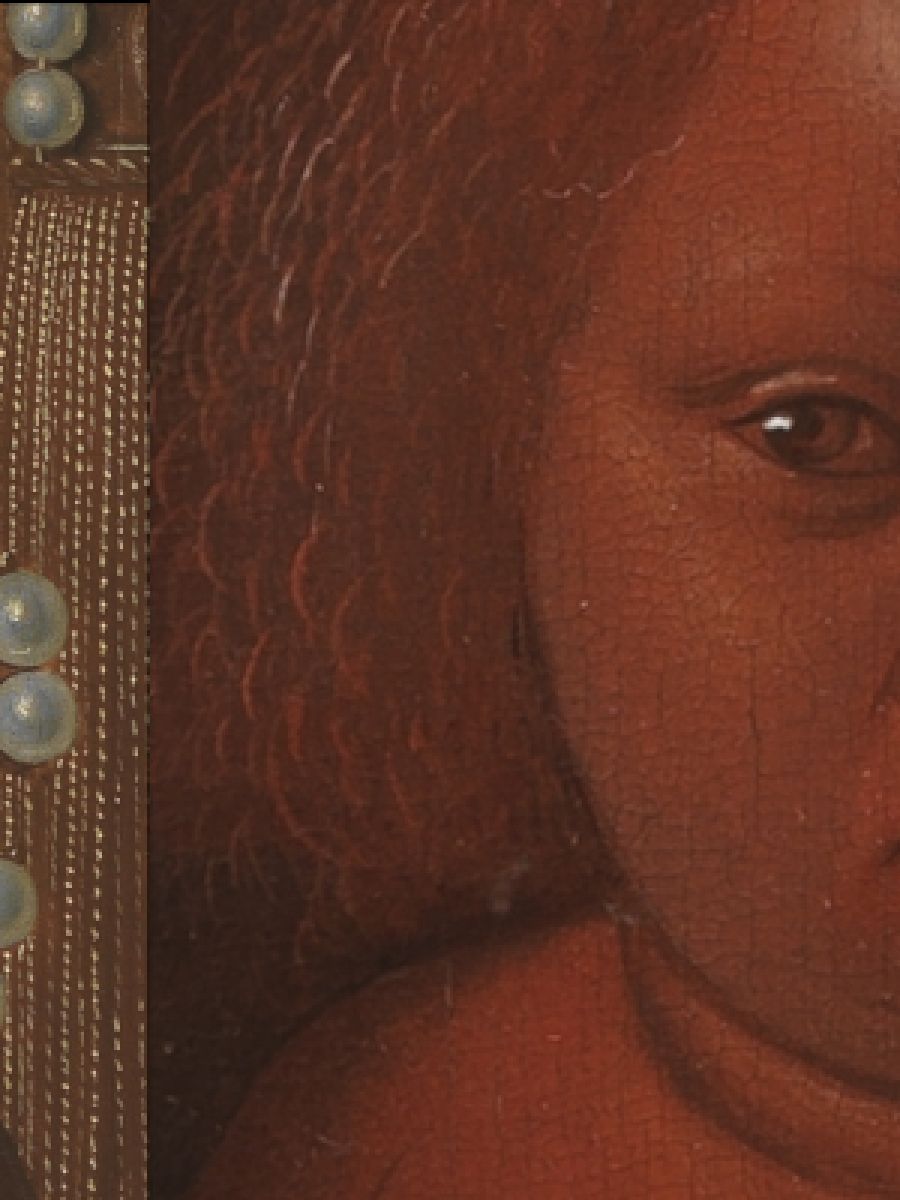
Detail of the painting showing reflection
4. This Madonna is a portrait
The Mother of God was viewed as the perfect woman. Artists developed a ‘standard Mary’, a total package of what a woman was supposed to look like. When the ideal of beauty changed, Mary was given a makeover. All the same, she was never a portrait. She remained a kind of holy Miss Universe. Jean Fouquet had other ideas. He gave his Madonna the features of a real woman, Agnès Sorel. Why her? Was it at Etienne Chevalier’s request? Or was Fouquet himself having a bit of fun?
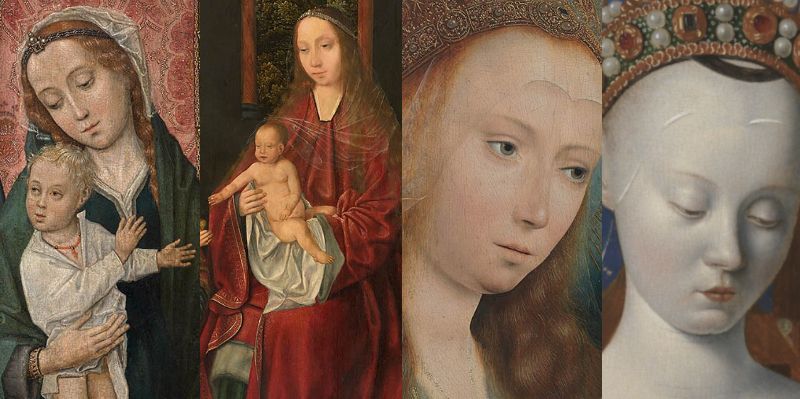
5. Is this Madonna really Agnès Sorel?
Is this actually Agnès Sorel at all? Some art historians have begged to differ. But the nose, the dimple in the chin and the other facial features certainly resemble those of her funerary effigy and death mask. What’s more, this Mary is fashionably dressed: she doesn’t wear the customary shapeless dress with thousands of folds. The Madonna in this painting is simply too trendy to be a standard model.
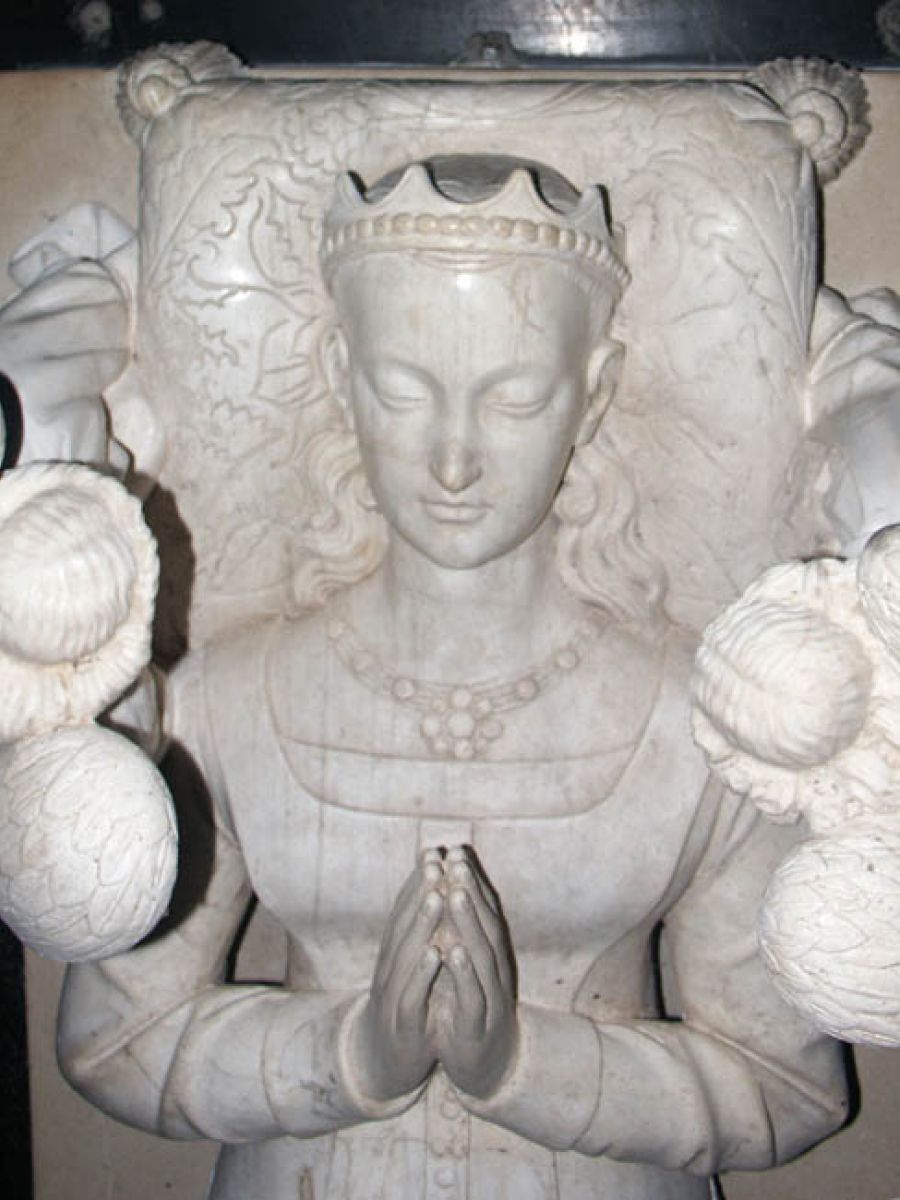
Tomb picture Agnès Sorel
6. This Madonna is a proven formula
Actually, this Madonna is not unique. Fouquet had painted her before but then replaced her with a portrait of King Charles VII. X-ray examination of that panel reveals a Madonna in the same pose with a round, bare breast but without the angels. Although she does look a bit squashed within the edges of the painting, so the composition wasn’t entirely successful. Is that why Fouquet painted over her? And did he then wait for a new client to come along so he could paint his ideal Madonna again on a larger panel? Research shows that Fouquet painted the KMSKA Madonna straight off, without any hesitation or experimentation. As everyone knows, practice makes perfect...
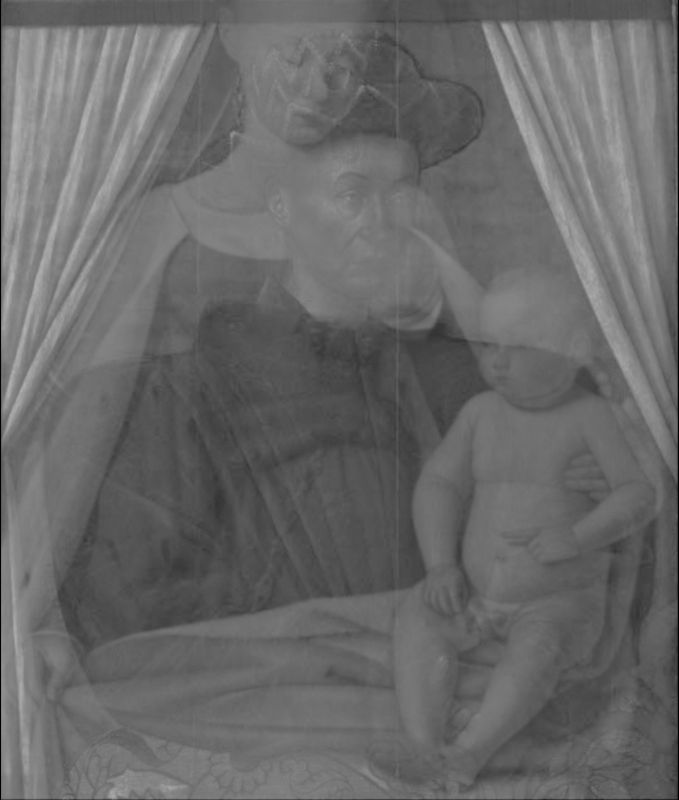
An earlier version of the Madonna was painted over by the artist



